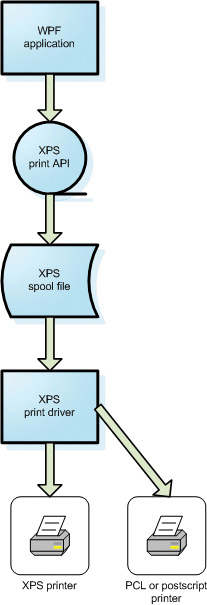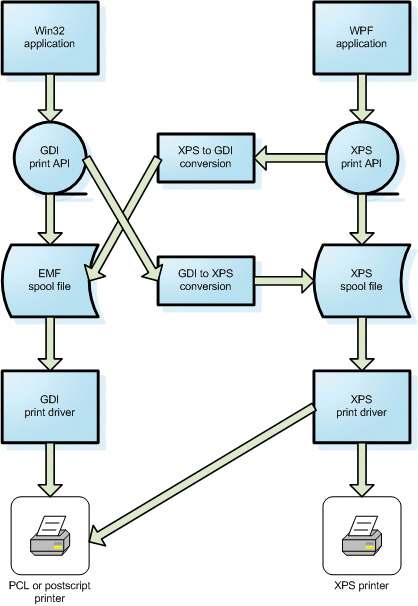User Productivity Tools
Printing
The Printing Process
The printing process in Windows 7 supports new XPS-based printing as well as Graphics Device Interface (GDI)-based printing. GDI was used to render screen drawings and print jobs in Windows XP.
- GDI-based printing is used by previous versions of Windows. A Win32 application uses GDI to create an enhanced metafile format (EMF) file for the print job. The EMF file is stored in the printer queue, and it must be converted to the format understood by the printer. Printers typically understand either Postscript or Printer Control Language (PCL).

- XPS-based printing is used by new Windows 7 applications. When used, a WPF application creates an XPS file for the print job. The XPS file is stored in the printer queue and is equivalent to the EMF file in the GDI-based printing process.If an XPS printer is used, the XPS print job can be transferred to the printer with no further conversion because the printer understands XPS and can render jobs internally.

- The Windows 7 printing process is flexible to accommodate older applications and older printers that do not support XPS-based printing.

- The benefits of XPS-based printing include:
- XPS printing is better at handling complex graphics than GDI-based printing
- Improved color printing: The new XPS spool file pass color information directly to the printer.
- Improved print quality: The XPS printing process eliminates format conversions whenever possible to prevent inaccuracies introduced during conversion.
- Improved print job configuration: XPS-based printing uses a new format to describe print job settings called XML PrintTicket.
- Improved device configuration: XML PrintCapabilities is a new system for advertising the availability of printing options for a device.
- Improved spooling: The processing required to spool a print job has been reduced by using XPS as the spool format rather than using EMF as an intermediary format between the operating system and the printer device.